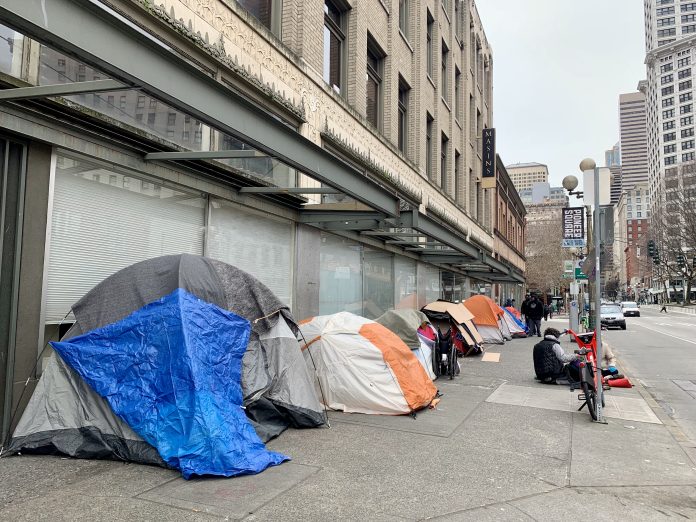Data reveals a 5% increase in people living on the streets from 2019.
In the earliest hours of the morning on January 24th, 2020, volunteers set out to conduct King County’s annual Point-in-Time count. For the first time in three years, it rained heavily as the volunteers counted people spotted sleeping in tents, vehicles, or on the pavement. According to the 2020 Count Us In report, the heavy rain may have decreased visibility from volunteers’ car windows or pushed people who usually sleep unsheltered to take cover in areas where they could not be seen, thus potentially erasing many individuals from the total count of 11,751 people experiencing homelessness, representing a 5% increase from the previous year.
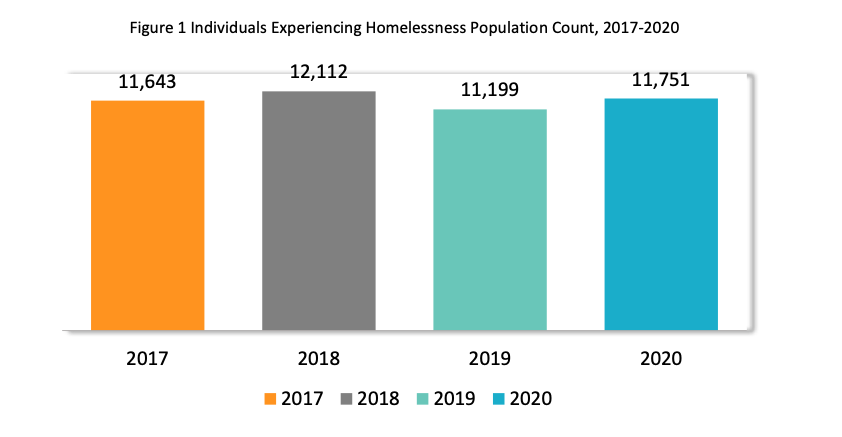
There is never complete certainty around the accuracy of Point-In-Time counts. Even with the surveys completed in shelters and the assistance of field guides, who steer volunteers toward where people typically camp or in which vehicles people might be sleeping, the margin of error remains high. Yet the report does offer a snapshot into homelessness in King County, an attempt to tally the how many people are living in shelters or out on the streets during the coldest time of year.
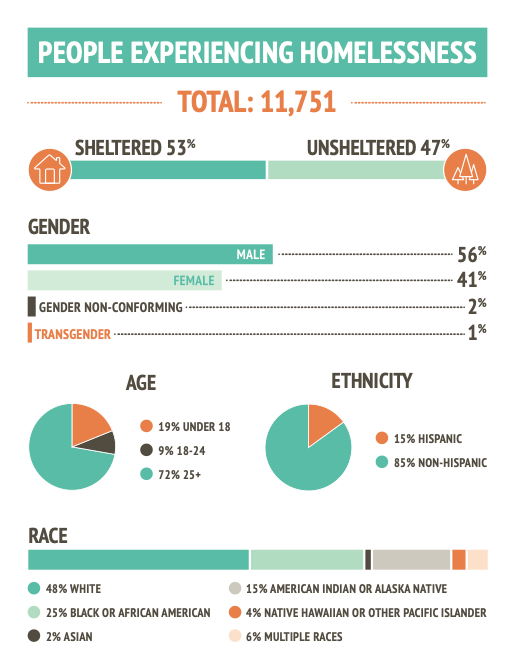
Each year some statistics stand out in the report. In 2020, a rise in the number of families with children experiencing homelessness was one of them. After declining or remaining steady over the last four years, the number of homeless families increased by 35% to 3,743 individual adults and children.
Even more troubling was news that the number of families with children sleeping unsheltered (i.e., in a vehicle, on the street, in an abandoned building, in a tent, or in a sanctioned encampment) rose from a flat 3% in 2017, 2018, and 2019, to 29% in 2020. Looking closer at the statistics on families, about 100 homeless families, representing 251 individuals, were headed by teenaged parents, and almost 50% of all homeless families with children were Black, a figure that highlights the racial disparity existing across all categories of people experiencing homelessness.
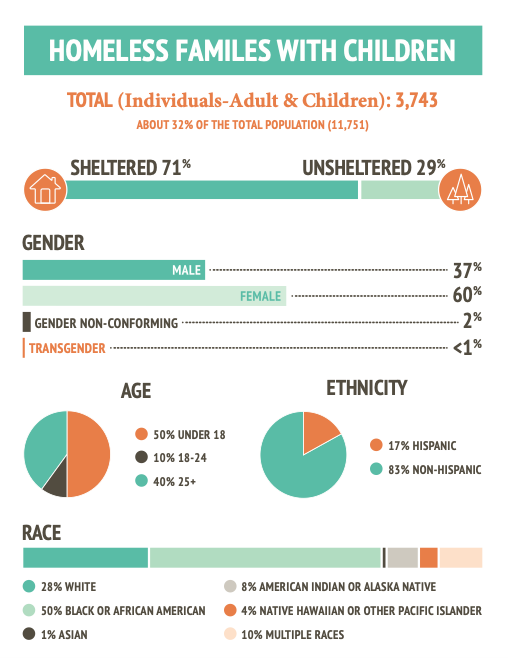
On a brighter note, it is also possible that since January the number of families with children living unsheltered has decreased a bit as concerns over the Covid-19 pandemic have mobilized some services in support of homeless families. According to reporting from the South Seattle Emerald, in April, Mary’s Place, an organization serving homeless families, signed a two-year no-cost lease on the site of the former Keiro Northwest Rehabilitation and Care Center in Seattle’s Central District. The facility is now being used as a 24/7 shelter for families with children, and housing 275 formerly homeless family members in private rooms. Residents also receive employment counseling and other social services.
Additionally, one of the few positive trends outlined in the report was a slight decrease in the number of unaccompanied youth and young adults experiencing homelessness, a number which fell from 1,089 in 2019 to 955 in 2020.
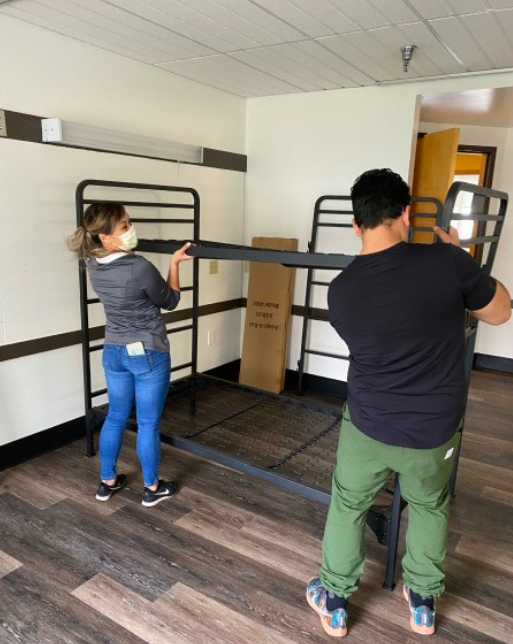
However, while economic factors like cost of living and job loss were cited mostly commonly as reasons for why people fell into homelessness, the amount of people who self-reported as fleeing domestic violence surged by 127% in 2020.
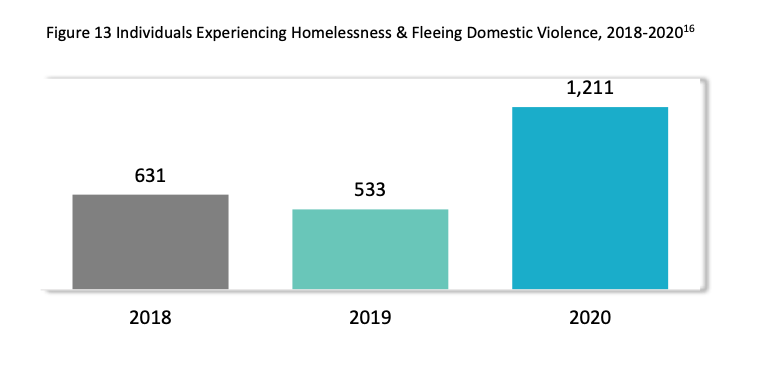
Could New Regional Efforts Reduce Homelessness?
One of the changes since last year’s Point-in-Time count was the adoption of a Regional Homelessness Authority. The legislation to create this new authority was co-written by King County Executive Dow Constantine and Seattle Mayor Jenny Durkan, and both the King County Council and Seattle City Council voted in 2019 in favor of its implementation. Overseeing a budget of about $130 million, $75 million of which was dedicated from the City of Seattle, the Regional Homelessness Authority will “oversee policy, funding, and services for people experiencing homelessness countywide.”
It remains to be seen how effective the new authority will be in the face of the regional housing crisis and economic disparity, both of which continue to disproportionately impact people of color, especially Black residents of King County, who comprise only 7% of the total population, but represent 25% of people experiencing homelessness. That figure is outmeasured only by Native Americans, who make up only a mere 1% of all King County Residents, yet represent 15% of people experiencing homeless, a number that continues to grow year after year.
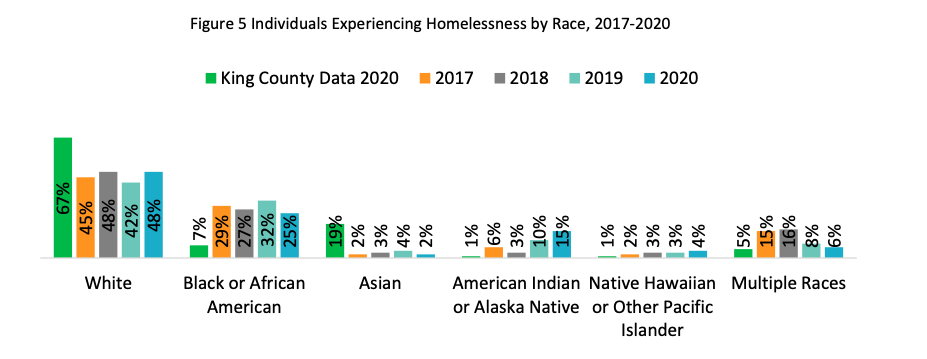
“Seeing these numbers of Native homelessness is heartbreaking. I feel enormous pain and sorrow for my relatives, who because of their indigeneity, because of their historical and on-going trauma, will experience the highest rates of homelessness,” said Colleen Echohawk, Executive Director of the Chief Seattle Club, co-chair of the King County Continuum of Care Board, in a press release by King County. “Systemic and institutionalized racism continues to ensure that BIPOC communities experience homelessness at much higher and alarming rates.”
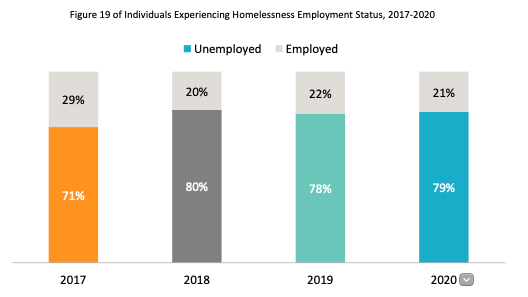
In a nod to the impact of high cost of living on people experiencing homelessness, about 21% of people surveyed were employed and when asked, 94% of respondents said they would prefer to have secure housing. Additionally, at 40%, the number of people who reported as experiencing homelessness for the first time was also at a high.
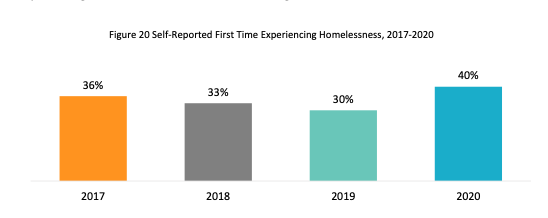
Understanding how much of the homeless population is identified as chronically homeless is a key indicator for cities and states seeking to identify if they are making gains in reducing the number of people who sleep on their streets. The United States Department of Housing and Urban Development (HUD), defines chronic homelessness as applying to a person who:
“is homeless and resides in a place not meant for human habitation, a safe haven, or in an emergency shelter, and who has been homeless and residing in such a place for at least 1 year or on at least four separate occasions in the last 3 years. The statutory definition also requires that the individual or family has a head of household with a diagnosable substance use disorder, serious mental illness, developmental disability, posttraumatic stress disorder, cognitive impairment resulting from a brain injury, or chronic physical illness or disability.”
Credit: Hud.gov
Underscoring the intractability of the homelessness crisis in King County, the number of people identified in the Point-in-Time survey as chronically homeless increased by about 1.5 times between 2019 and 2020.
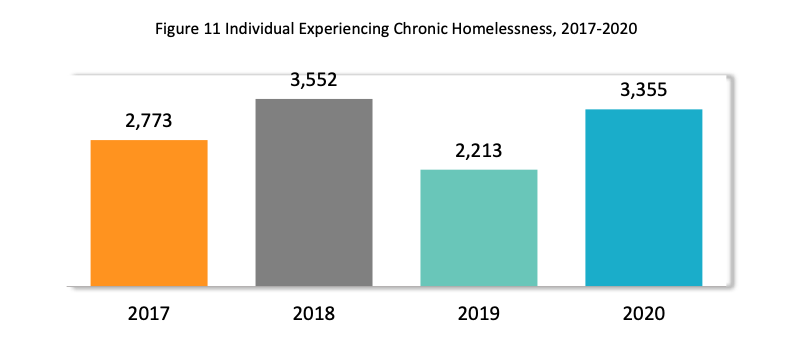
With budget deficits looming, the amount of funding that local, state, and federal government will be able to funnel into the Regional Homeless Authority remains uncertain. What is clear, however, is that despite efforts made by local government and nonprofit organizations to solve the countywide homelessness crisis, the number of homeless people sleeping both sheltered and unsheltered across King County continues to remain stubbornly high.
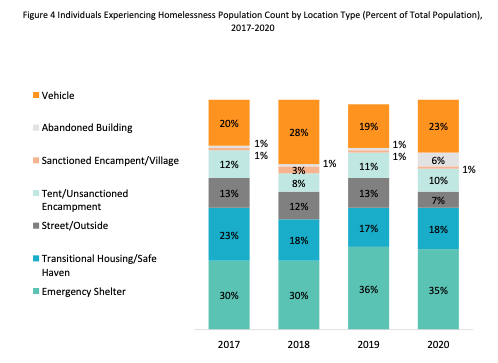
Natalie Bicknell Argerious (she/her) is a reporter and podcast host at The Urbanist. She previously served as managing editor. A passionate urban explorer since childhood, she loves learning how to make cities more inclusive, vibrant, and environmentally resilient. You can often find her wandering around Seattle's Central District and Capitol Hill with her dogs and cat. Email her at natalie [at] theurbanist [dot] org.

